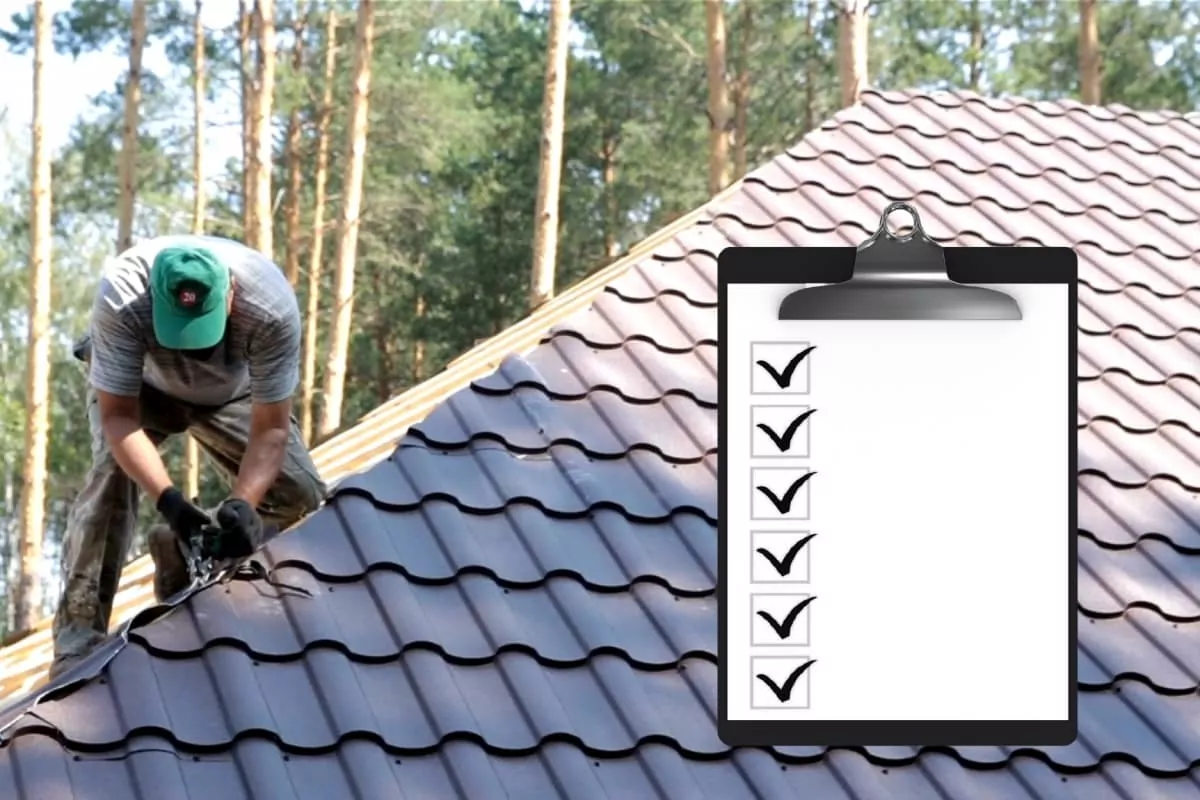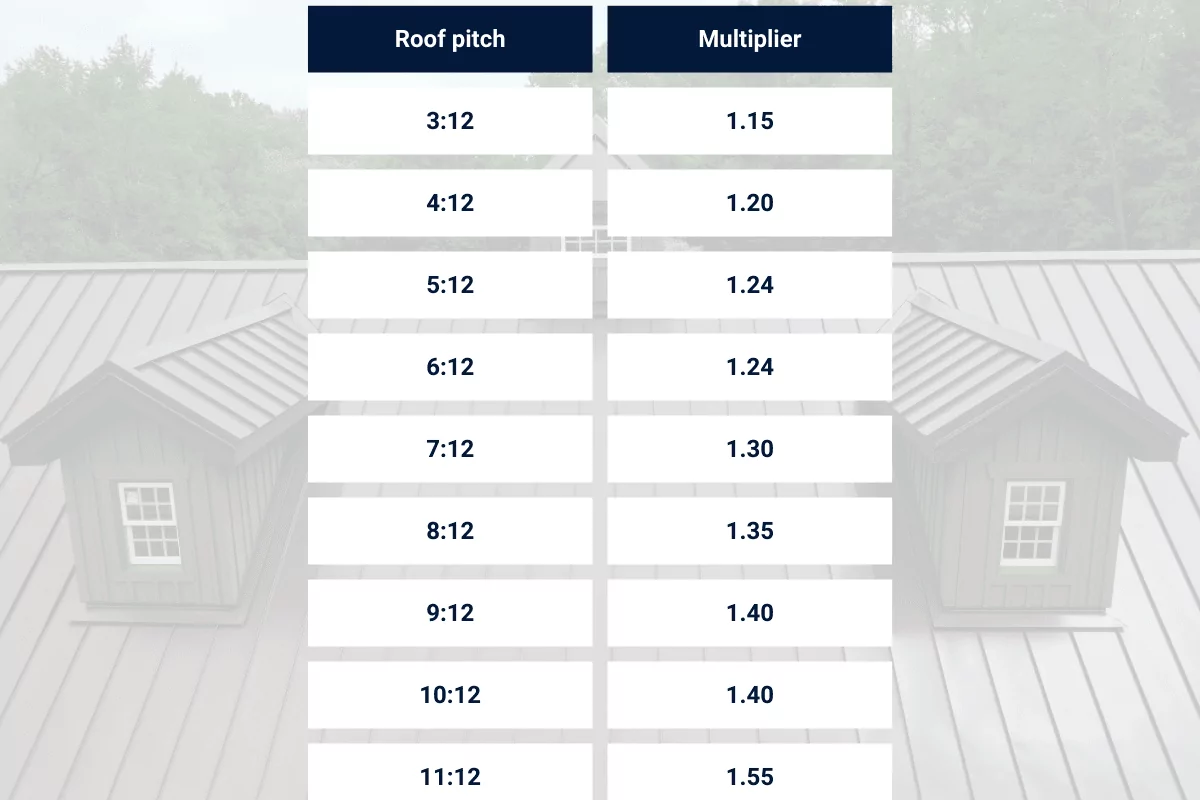How to Bid a Metal Roofing Job: Don’t Lose on Price
Master the art of accurate estimates and stand out in the competitive roofing market
By Nelmie Jane Pardo | Updated April 17, 2023
Estimating a metal roofing job can appear complex for contractors.
You don’t want to sell yourself short and diminish your profit, but you also don’t want to lose the project.
But with accurate calculations and transparent pricing, you can give your client a precise bid that’s just right for the roofing job.
Today, we will explain how to bid a metal roofing job and walk you through every step of the process.
How to Bid a Metal Roofing Job
Keep reading to learn cost estimation strategies and essential tips to stand out against the competition.
1. Bid selectively.
Before turning in a bid proposal, make sure the job is a good fit for your roofing company.
Can you provide all the necessary equipment and manpower for the project? Do you have the knowledge and experience to complete the metal roofing job efficiently?
It’s best to choose roofing projects that match your skills, experience, and qualifications to avoid underperforming or losing profit.
2. Review the project’s scope and survey the roof.
Read the bid documents thoroughly, whether you’re responding to a request for proposal (RFP) or a request for quotation (RFQ).
Meet with the client to build rapport, and don’t hesitate to ask questions for a clearer estimation process. You can ask about their budget, roofing requirements, expectations, and other project specifications.
Be aware of building codes. Contact a local building inspector to learn about applicable building codes and avoid using restricted materials. For example, using particular materials and colors is mandatory in certain enclosed housing estates for uniformity.
Inspect the roof. A thorough inspection of the entire roof will save you from unexpected issues and headaches.
You may be able to spot hidden damage property owners usually don’t know about and help them save money by fixing the issue before it worsens. Plus, you’ll immediately gain the client’s trust and confidence when they see your meticulous approach.
Check for damaged sections, the shingles’ condition, valleys and eaves, hips and ridges, and roof elements like solar panels.
3. Take accurate measurements.

Correctly pricing your roofing services is a critical element in running a profitable roofing business. And for that, you need precise measurements.
Confirm the number of squares to install, so you can properly estimate labor and material costs.
In the roofing trade, one square is equivalent to 100 square feet.
Identify the number of ground-level squares: First, divide the building’s external dimensions by 100. For example, a 30’ x 50’ building has a 1500-square-foot external dimension. You get 15 ground-level squares for the roofing job when you divide 1,500 by 100.
This calculation applies to a flat roof area. Be sure to get a precise measurement for pitched roofs. You’ll have to visit the site to measure the roof slope and confirm other measurements.
Determine the roof pitch: Ratios represent the roof pitch or steepness. For example, a 5:12 ratio means the roof rises 5 feet for every 12 feet of horizontal length.
Roof pitches up to 5:12 are low, whereas roof pitches from 6:12 to 9:12 are medium. High roof pitches range from 10:12 to 12:12.
Use a pitch multiplier: Finally, calculate the precise number of necessary squares by multiplying the ground-based squares with a pitch multiplier.
Check the pitch multiplier table in the photo above to get accurate results.
Let’s say your client’s property has a 4:12 roof pitch and 15 ground-level squares.
15 ground-level squares x 1.20 multiplier = 18 final roof squares
4. Calculate material costs.
Complex roofs with multiple pitches and valleys will be more expensive and take a longer installation time.
Be sure to prepare a complete list of all roofing materials for the project. Call your suppliers for the exact cost of every material you need for the roofing project.
Metal roofing jobs typically require metal sheet panels or shingles, flashing, and underlayment. You’ll also need ridge caps, drip edge, and metal roofing nails.
Tally your costs carefully, ensuring you don’t miss or miscalculate any roofing material. It’s a good idea to apply an allowance to your material cost estimate to cover waste and mistakes.
Tip: Choose a supplier that offers quality materials and discounted rates for bulk orders.
5. Estimate labor costs.
When estimating labor costs, it helps to review past project data for similar jobs to evaluate how long the project will take and price your labor hours efficiently.
Besides the employees’ hourly wage, factor in your company’s taxes, benefits, and insurance, including workers’ compensation. Research local labor rates to ensure competitive pricing.
Additionally, calculate the total labor hours by multiplying the labor hours by your number of roofing employees.
Finally, multiply the total labor hours by the final labor rate of your employees to determine your labor cost.
Roofing companies typically charge $40 to $80 per hour or anywhere from $2.30 to $5.80 per square footage.
6. Estimate overhead costs.
Overhead costs cover all other expenses not directly involved with the roofing project but related to running your business.
They usually include rent, accounting, transportation, communication, marketing, and software.
You can add a flat percentage to your total project cost. Or divide your monthly overhead costs by the number of days you operate a month, and multiply it by your roofing project’s estimated days.
Use roof bidding estimation software for estimating material and labor costs if you find the process time-consuming.
7. Sum up all roofing costs and add markup for profit.
After estimating the total roofing cost, it’s time to add your markup to gain a fair and reasonable profit. Add your desired markup percentage to achieve your target profit margin.
For example, you should add a 15% markup to your break-even cost to achieve a 13% profit margin on your roofing jobs.
It’s best to balance profitability and competitive pricing, ensuring you don’t underprice your services and lose profit or overprice and lose the job.
8. Create a well-thought-out bid proposal.
Accurately estimating a metal roofing job is only half the battle.
You now have to put together a professional bid proposal to show the client you’re the best choice.
A metal roofing bid includes the total cost of the project and a pricing breakdown. It also includes details about your services, payment requirements, additional notes, and essential terms and conditions. Be sure to use your client’s bidding form, if any.
Tip: Stand out by adding testimonials for social proof and past photos of successful projects to inspire confidence. If applicable, you can add roof photos, particularly problem areas, along with notes on how to fix them.
9. Turn in your proposal.
Have someone double-check and review your proposal before sending it to the client. You should make sure everything is as accurate as possible, from material and labor costs to your final price.
Final thoughts
Mastering the cost estimation process will help you price your roofing services correctly and give clients the best value for their money.
Follow our step-by-step guide above to streamline your estimation process while running a profitable business.
Written by Nelmie Jane Pardo

Nelmie Jane Pardo is a senior contributing writer who lends insight into digital marketing methods and business solutions. She regularly writes at BusinessHue to help business owners take their online marketing to the next level.